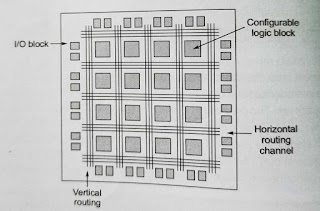VLSI SKILL SET
A SURVEY ON VLSI SKILL SET
(survey done till 11th dec,2020 11.59PM)
QUESTIONS AND RESPONSES OF SURVEY:
Design
flow:
A design flow is a sequence of operations that transforms the IC
designers intension{ usually represented in RTl format} into layout. The design flow for a
typical IC project is shown in figure{2.4}.
CONCEPT AND MARKET RESEARCH:
A detailed research about the tools available for
designing the IC according to the speacification given in the requirements documents done
thoroughly.
Architecture specification and design constrains:
The design idea refined into a set of requirements is
known as specification. The general specification are,
1.What does the chip do?
2.How fast it need to operate in order to be
compititive in market?
3.How much power will it consume?
4.How big will it be?
HDL CAPTURE AND RTL COADING
The design of integrated allows the circuit{ICs} in an
art. During a half century of IC development, it has gradually become clear
that there is a need for a computer language to describre the structure and function of integrated
circuits, or for describing on entire electronic system. As a result, two HDL
languages, Verilog and VHDL, have been standardized and have emerged as the
tools for IC design.
An HDL is created to meet a number of needs in the
design process:
1:HDL allows the description of structure of a
hardware system.
2.HDL can be used to described how the system is
decomposed in to building blocks and how those building blocks are
interconnected.
3. It allows the specification of system functionally
by using the form of familiar programming languages.
4.The design of a system can be simulated before being
manufactured so that designers can quickly compare alternatives and test for
corrections without the delay and expense of hardware prototyping.
5.It allows the detailed structure of he design to be
synthesized from a more abstract specification, allowing the designers to
concentrate more on strategic design decisions. This automatic synthesis process
also helps reduce design implantation time.
LOGIC SIMULATION:
Simulation is the use of a computer programe to
simulate the operation of a digital circuit. logic stimulation is the primary
tool used for verifying the logical correctness of a hardware design. In many
logic simulation is the first activity performed in the process of taking a
hardware design from concept to realization . modern hardware description are
both simulatable and synthesizable.
LOGIC SYNTHESIS:
Logic synthesis is the process of translating an
abstract form of desired circuit behaviour { typically in RTL} into design
implementation in terms of logic gates.
LOGIC OPTIMIZATION:
Logic optimization a part of logic synthesis, is the
process of finding an equivalent representation of the specified logic circuit
under one or more specified constraints. Generally, the circuit is constrained
to minimum chip area meeting a prespesified delay. with the advent of net list reprentation
of the given design description. Today , logic optimization is devided in to
various categories based on two criteria:
BASED ON CIRCIUT REPRESNTATION :
1.Two -level logic optimization
2.Multi-level logic optimization.
BASED ON CIRCUIT CHARACTERISTICS:
1.Sequential logic optimization.
2.Combinational logic optimization.
FORMAL VERIFICATION:
Reification is the process of cheaking the designs
functional correctness. This process can consume over 60% of the total design
resoures in todays large , complicated chip designs.
Formal verifications techniques perform validation of
a design using mathematical methods without the need for technological
considerations, such as timing and physical effects. they chaeck for logical
functions of a designed by comparing it against the reference design.
The perpose of the formal verification in the design
flow is to validate the RTL against RTL ,gate-level netlist against the RTL
code, or the comparison between gate-level netlists. The RTL to RTL verification
is used to validate the new RTL against
the old functionally correct RTL . this is usually performed fpr designed that
are subject to frequent changes in order to accommodate additional features.
When these features are added to the sourse RTL ,here is always a risk of
breaking the old functionally correct features .To prevent this, formal verification
may be perform between the old RTL and the new RTL to check the validity of the
old functionality.
STATIC TIMING ANALYSIS:
Static timing analysis {STA} is a method of computing
the expected timing of signals inside a digital circuit without using
stimulation.
STA is not designed for verifying the designs
functional correctness but to cheak its timing validity .it locates the worst case delay of the circuit over all possible
input combinations. There are huge numbers of logic path inside a chip of
complex design. The advantages of STA is that itperforms timimg analysis on all
possible paths. In other words , unlike simulation, which only cheak timing on
given paths, STAis a complete timing cheak all that cover of the paths,
wheather they are real or potential false paths
Author name:
Rohan Awale
Ref:
NPTEL Lec of Digital Design



Good information!
ReplyDeleteInformative!
ReplyDeleteVery informative !!!
ReplyDeleteok
DeleteGreat content on VLSI skill set!
ReplyDeleteVery well explained. keep it up
ReplyDeletethank you
DeleteNice writing, well explained. Keep it up!!
ReplyDeletethak you and in coming weeks i will definietly post such type of blogs
DeleteInformative blog
ReplyDeletethanks for appreciation.
DeleteKeep it up very informative
ReplyDeletethank you for appreciation
Deletevery useful!!
ReplyDeleteVery Nice information.
ReplyDeleteWell explained. Keep it up
ReplyDeleteInformative👍
ReplyDeletethank you
DeleteVery informative blog..many things to get learn from this...keep it up👍
ReplyDeletethank you for appreciation , in coming weeks i will posting such type post so do read that one also
DeleteGreat work!!!
ReplyDeletethank you for appreciation
DeleteAwesome👍👏
ReplyDeleteGreat work!!!!!
ReplyDelete👍👍good informative content
ReplyDeleteA survey giving us the complete idea about the skills required in VLSI. Well done.
ReplyDeletethank you and i coming days we will postiing such type of blog on some another concept of VLSI do read it.
DeleteGreat to have such valuable information at one place
ReplyDeletethank you for appreciation.
DeleteInformative 👍
ReplyDeleteok
DeleteVery informative content bro , it was very helpful and Easy to understand too.... great work !!
ReplyDeleteAll my doubt are cleared , well explained. Thank you 👍
ReplyDeletereally thank you , as my this small content helps you it motivates me in my further tasks.
DeleteVery insightful!
ReplyDeletethank you
DeleteVery informative!
ReplyDeleteGood
ReplyDeleteVery informative
ReplyDeleteVery informative 👍
ReplyDeleteVery informative! 👍
ReplyDeleteInformative
ReplyDeleteGreat work!!
ReplyDeleteNicely written!!
ReplyDeleteGot too know about latest Industrial needs.. Well written
ReplyDeletethank you for appreciation and in coming days i will posting such latest things happen in VLSI industry do read it.
DeleteVery informative 👍
ReplyDeleteGood work!
ReplyDeleteNice work
ReplyDeleteInformative!!
ReplyDeleteGood information
ReplyDeleteVery nicely Explained about VLSI skill sets ✨
ReplyDeleteExcellent..... Keep it up 👍👍
ReplyDeleteVery informative content! Got to learn many things about vlsi
ReplyDeletethank you for appreciation
DeleteInformative content keep it up
ReplyDeleteInformative blog
ReplyDeleteExcellent information...!!!
ReplyDeleteKeep it up..👍👍
Very informative blog...got better understanding in VLSI design...please suggest some important part of VLSI DESIGN
ReplyDeletethere as such not any imp point , it is whole concept very important from the point of VLSI
DeleteGood research and very informative
ReplyDeleteNice explanation Rohan sir...!!!
ReplyDeleteKeep it up..and do posting such helpful good content blogs.. really help this!!
Yes...sure also I am learning about new adv.
DeleteThings regarding it.. definitely I will publish.
That's great 🔥👍🏻
ReplyDeleteVery insightful
ReplyDeleteGreat work!
ReplyDeleteVery well presented. Nice work
ReplyDeletethank you
DeleteVery informative!
ReplyDeleteVery good illustration using the pie chart. Keep it up
ReplyDeleteNice explanation Rohan bhai...!!!
ReplyDeleteKeep it up..and do posting such helpful good content blogs.. really help this!!
thank you so much for the appreciation
DeleteExcellent
ReplyDeleteGreat work bro
ReplyDeleteGood work
ReplyDeleteVery informative
ReplyDeleteVery informative
ReplyDeleteVery informative
ReplyDelete